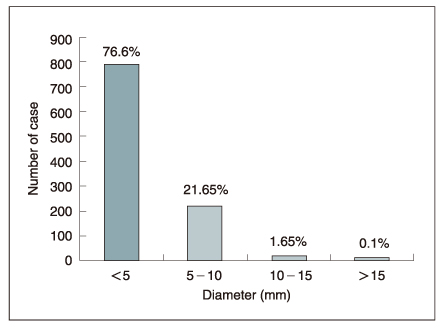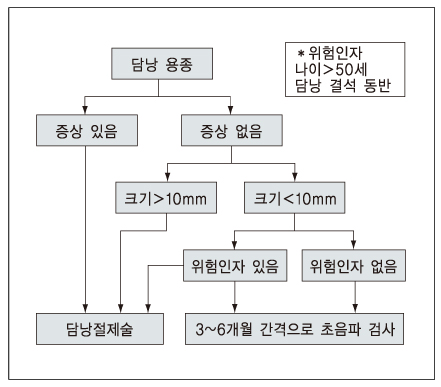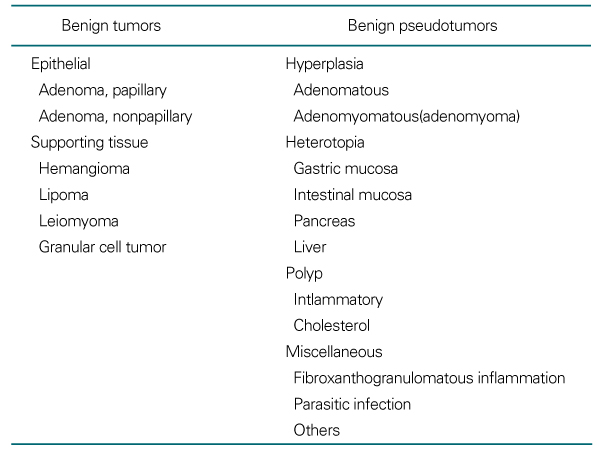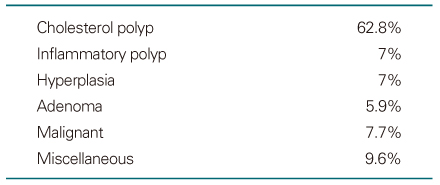 |
 |
- Search
| J Korean Med Assoc > Volume 49(5); 2006 > Article |
Abstract
Polypoid lesions of the gallbladder affect approximately 5% of the adult population. Most affected individuals are asymptomatic, and their gallbladder polyps are detected during abdominal ultrasonography performed for unrelated conditions. Most of these lesions are benign and small sized cholesterol polyps. Yet the surgery is the only way to confirm whether the polyp is benign or not. The most important factors to predict malignancy are the size of the polyp and the patients' age. Most of the polyps less than 10 mm are considered as benign. Ultrasonographic examinations at three-to six-month intervals are warranted to detect rapid growing polyps that should be considered as malignant. However, the imaging follow-up is probably not necessary after 1 or 2 years if there was no increase in the size of the polyp during the initial follow-up period. For polyps greater than 10 mm in diameter, sessile polyps, or patients over 50 years of age, laparoscopic cholecystectomy should be recommended. Polyps associated with symptoms or gallstones are also the indications of surgery.
References
1. Lee KF, Wong J, Li JC, Lai PB. Polypoid lesions of the gallbladder. Am J Surg 2004;188:186-190.
2. Moriguchi H, Tazawa J, Hayashi Y, Takenawa H, Nakayama E, Sato C, et al. Natural history of polypoid lesions in the gallbladder. Gut 1996;39:860-862.
3. Csendes A, Burgos AM, Csendes P, Smok G, Rojas J. Late follow-up of polypoid lesions of the gallbladder smaller than 10 mm. Ann Surg 2001;234:657-660.
4. Kozuka S, Tsubone N, Yasui A, Hachisuka K. Relation of adenoma to carcinoma in the gallbladder. Cancer 1982;50:2226-2234.
5. Yang HL, Sun YG, Wang Z. Polypoid lesions of the gallbladder: diagnosis and indications for surgery. Br J Surg 1992;79:227-229.
6. Kubota K, Bandai Y, Noie T, Ishizaki Y, Teruya M, Makuuchi M. How should polypoid lesions of the gallbladder be treated in the era of laparoscopic cholecystectomy? Surgery 1995;117:481-487.
- TOOLS
-
METRICS

-
- 0 Crossref
- Scopus
- 1,336 View
- 0 Download
-
Related articles in
J Korean Med Assoc -
Treatment of diabetic foot ulcers2021 August;64(8)
National Guidelines for Breast Cancer Screening2002 August;45(8)
Antianxiety Treatment Guidelines for Non-psychiatric Clinicians2002 August;45(8)









